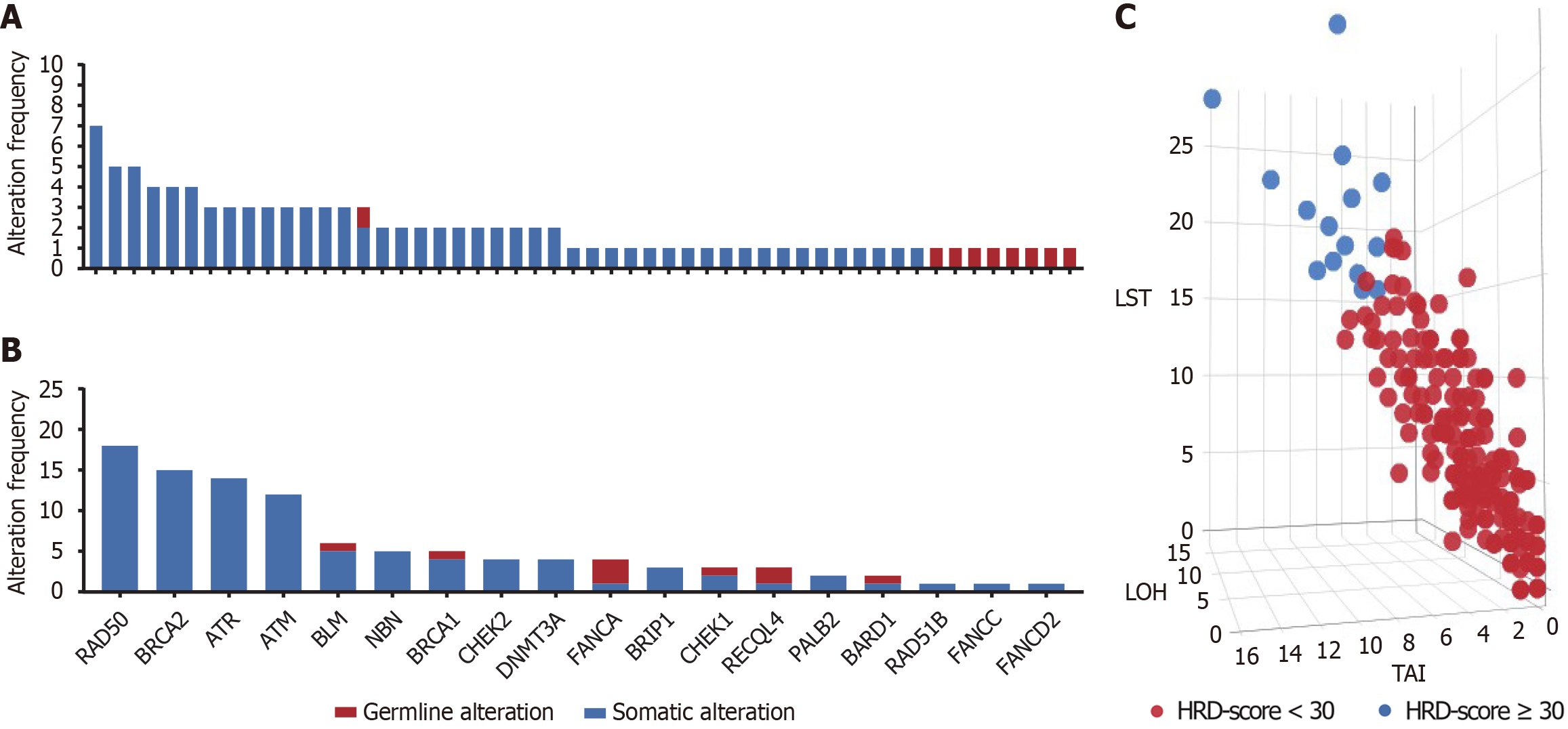Copyright
©The Author(s) 2025.
World J Gastrointest Oncol. May 15, 2025; 17(5): 102767
Published online May 15, 2025. doi: 10.4251/wjgo.v17.i5.102767
Published online May 15, 2025. doi: 10.4251/wjgo.v17.i5.102767
Figure 2 Homologous recombination deficiency-related gene alterations and homologous recombination deficiency-score distribution among colorectal cancer patients.
A: Each bar represents the number of patients carrying alterations in homologous recombination deficiency (HRD)-related genes, including germline and somatic alterations, with 52 individuals carrying the relevant alterations; B: Each bar represents the number of alterations in one HRD-related gene in the total population, including germline and somatic alterations; C: The X-axis, Y-axis, and Z-axis represent the telomere-allele imbalance, loss of heterozygosity, and large-scale state transition scores, respectively. The blue dots represent colorectal cancer patients whose sum of the three is greater than or equal to 30. HRD: Homologous recombination deficiency; LOH: Loss of heterozygosity; LST: Large-scale state transition.
- Citation: Feng H, Zhao LY, Xu Z, Xie QF, Deng HJ, Yu J, Liu H. Homologous recombination deficiency and immunotherapy response in microsatellite-stable colorectal cancer: Evidence from a cohort study in China. World J Gastrointest Oncol 2025; 17(5): 102767
- URL: https://www.wjgnet.com/1948-5204/full/v17/i5/102767.htm
- DOI: https://dx.doi.org/10.4251/wjgo.v17.i5.102767









